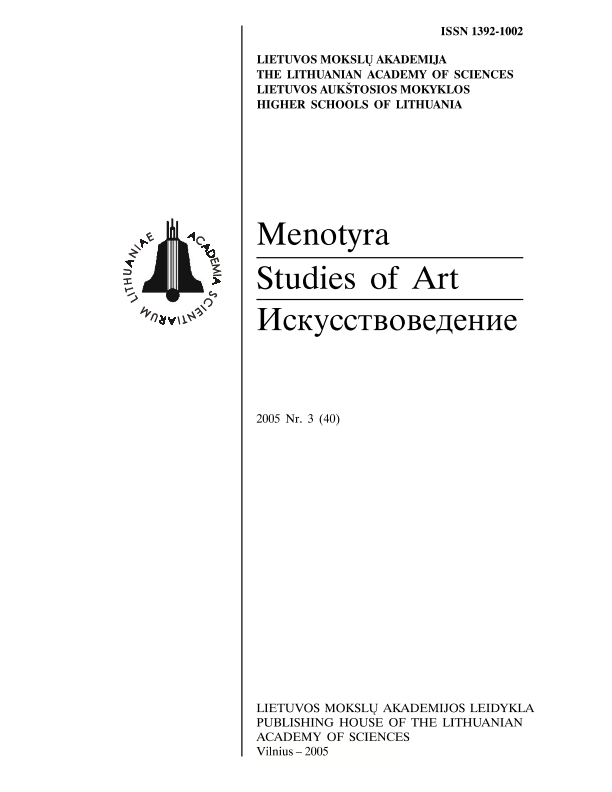Šalis, kurios nebuvo (Stanislovo Bohušo Sestšencevičiaus kūrybinio metodo klausimu)
A country that has not existed (on the creative method of Stanisław Bohusz - Siestrzeńcewicz)
Author(s): Jolita MulevičiūtėSubject(s): Cultural history, Visual Arts, Ethnohistory
Published by: Lietuvos mokslų akademijos leidykla
Summary/Abstract: In Lithuanian and Polish historiography Stanisław Bohusz-Siestrzeńcewicz has been frequently characterized as a talented draughtsman depicting everyday life of Lithuanian provincial areas. His graphic works are considered to represent the traditional realistic style based on a literal record of impressions from specific environments. Nevertheless, the analysis of Bohusz-Siestrzeńcewicz’s drawings and sketches suggests something else: often there were visual intermediaries between the artist's vision and the objects of reality. The artist frequently used the "secondary reality" - photographs (including the works by the Vilnius artist Stanisław Filibert Fleury) as well as his own paintings and drawings – repeating and varying both separate motifs and entire compositions. In his work, he broke down the boundaries between the spontaneous capturing of a moment and a calculated illusionistic trick, between an original prototype and a reproduction simulating authenticity. An assumption is made that such a method of artistic representation has evolved under the influence of mass-distributed visuality, which was spread by means of illustrated periodicals and reproduction prints. Bohusz-Siestrzeńcewicz acquired his initial artistic skills copying reproductions of artworks in magazines; later he continuously contributed to various periodical publications. On the other hand, his attitudes were influenced by the work of his teacher Józef Brandt and experiences in Munich during his studies. It is very likely that it was in Brandt's studio that the draughtsman mastered the method of re-creation of a photographic image and combination of different iconographic sources. Like Brandt, Bohusz-Siestrzeńcewicz explored subjects from life in the periphery of Polish lands (kresy). Contrary to the famous painter, he specialized not in the portrayals of specific places characterized by the ethno-regional and historical distinctiveness, but rather perfected in representing a universal picture of everyday life on the "margins", compiled from Lithuanian, Belarusian, Polish and Ukrainian motifs. The geographical contours of his image roughly corresponded to the historic regions of the Grand Duchy of Lithuania and the eastern borders of Poland and the contents expressed nostalgic and romantic moods characteristic of the 19th-century Polish artists.
Journal: Menotyra
- Issue Year: 2005
- Issue No: 3(40)
- Page Range: 1-14
- Page Count: 14
- Language: Lithuanian

